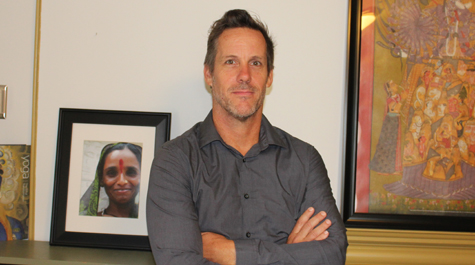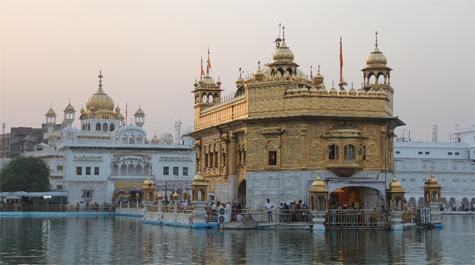W&M professor uses Google Cardboard to bring religious sites to classroom in 3D
Before smartphones even existed, Mark McLaughlin, visiting assistant professor of religious studies at William & Mary, had a vision for bringing technology into the classroom. It all started while he was traveling through a remote region of Cappadocia, Turkey, in the early ’90s, and came across a cave-like structure dating back to the 6th century.
“It was a huge basilica carved out of stone,” he said. “The craftsmanship was incredible. No one had really written about it or investigated it before, so I spent several weeks documenting and photographing it — and yet, photos couldn’t really do it justice. So back then I started contemplating better ways to be able to capture a space like this and share it with others.”
Two decades later, McLaughlin, along with Mike Blum, W&M e-learning specialist and program manager, found his solution in a $15 piece of cardboard developed by Google. Aptly named Google Cardboard, the origami-like contraption is delivered flat and unfolds into a virtual reality headset that, when used with a smartphone, transports the viewer into a 3D photographic environment. McLaughlin is currently developing a curriculum that incorporates Google Cardboard and will likely introduce the technology in his class on sacred spaces in India in the spring.
“It’s as if you’re standing in the middle of the space looking around,” said McLaughlin. “You have a sense of volume and how various aspects of the space are juxtaposed with others. It allows for a very dynamic immersion into the environment that could give rise to interesting questions or perspectives.”
Google Cardboard will be the first tool that McLaughlin will use to offer an immersive experience in his classroom, though he’s explored other options for better visualization of sites, including geospatial analysis and 3D scanning, for years. Most options he found were either too expensive or far too cumbersome to pull off.
“Google Cardboard costs less than a textbook, so in terms of accessibility it’s perfect for students,” he said.
While Cardboard is compatible with multiple smartphone apps, McLaughlin plans to use Google Street View to showcase religious sites such as temples, shrines and tombs around the world. The app allows the user to capture and upload a photo sphere (360-degree panoramic view) within minutes. The sphere can then be viewed in 3D with the Cardboard headset, and multiple people can view the same sphere at once.
“This allows me as a teacher to bring all of the students into the space at the same time so we can explore it together, and I can lecture simultaneously,” he said. “In addition, the student has the freedom to explore the space on their own, which could lead to interesting and original research questions. In a sense, it puts them in the driver’s seat as the primary investigator or explorer.”
McLaughlin plans to capture as many rural sites as possible during his own travels through India and around the world, but another plus to Street View is that many photo spheres of religious sites and ruins — mostly those frequented by tourists — already exist. He is also in the process of seeking grant money that would allow him to train a team of W&M students to travel to India with him to capture spaces, gaining valuable field research experience.
“What’s great is that you’re plugged into a public domain, so anything people have already uploaded you can go in and see,” he said. “And then anything we publish and use in the classroom would be free for other professors to use in their classrooms as well.”
McLaughlin hopes more scholars will contribute to the database of religious sites as they go about their research through 3D photos and, someday, 3D videos, which he said is the next frontier he’s pursuing in Google Cardboard.
“The benefit to 3D video is that you have the ability to move the viewer through the space in a way that you would want them to explore it,” he said. “It also opens up the possibility for recording important ritual activity. It will be interesting to see how important sound is as well. There are some really exciting and dynamic applications of this that I am looking forward to.”
















